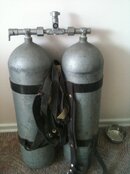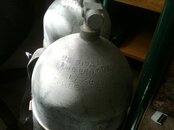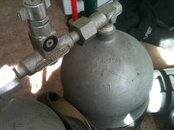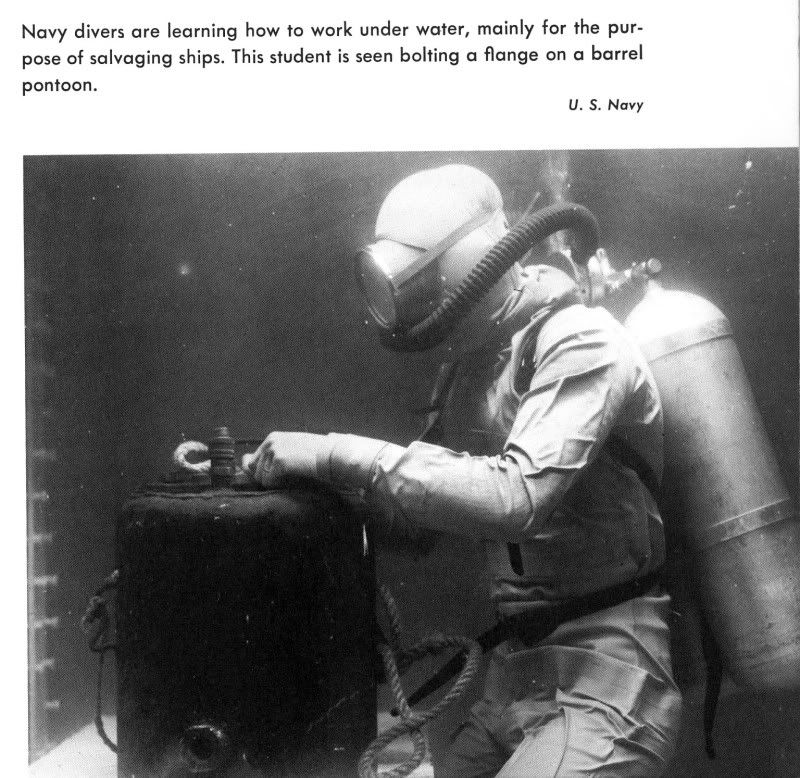elan
Contributor
One gentlemen was kind enough today to part with his set. So they found a new home 
The tanks still have some air in them, and the O2 percentage did no seem to have dropped it read one tenth lower than the air I used to calibrate. So I hope they are not rusty inside.
He claimed it was original set and was not dived for very long time.
I want to ask our experienced guys few questions.
First about markings. I was able to decode almost everything except few things.
They read ICC-3AA2150 which I assume 3AA alloy and 2150psi pressure. What is ICC ?
9624 I assume is the serial number ? It is 11117 on the other tank.
They are made by PST as I understand and the manufacture date/hydro is May 1954 ? Can the serial numbers be so far if they were originally sold as a set ? The hydro/manufacture date is the same on both tank as well as the rest of the informatiom is identical except 9624 and 11117
What does marking RENE mean ?
What does L in the circle with an arrow mean ?
I want to disassemble them, clean and overhaul the manifold.
Are there any specific things I should look for while doing that ? I was overhauling a mordern - termo manifold and valves but never did those vintage ones.
As I understand the manifold is 1/2 inch. Are there any o-rings there that I need to replace, like in the modern ones.
Thanks a lot, guy, for all your help in advance.
The tanks still have some air in them, and the O2 percentage did no seem to have dropped it read one tenth lower than the air I used to calibrate. So I hope they are not rusty inside.
He claimed it was original set and was not dived for very long time.
I want to ask our experienced guys few questions.
First about markings. I was able to decode almost everything except few things.
They read ICC-3AA2150 which I assume 3AA alloy and 2150psi pressure. What is ICC ?
9624 I assume is the serial number ? It is 11117 on the other tank.
They are made by PST as I understand and the manufacture date/hydro is May 1954 ? Can the serial numbers be so far if they were originally sold as a set ? The hydro/manufacture date is the same on both tank as well as the rest of the informatiom is identical except 9624 and 11117
What does marking RENE mean ?
What does L in the circle with an arrow mean ?
I want to disassemble them, clean and overhaul the manifold.
Are there any specific things I should look for while doing that ? I was overhauling a mordern - termo manifold and valves but never did those vintage ones.
As I understand the manifold is 1/2 inch. Are there any o-rings there that I need to replace, like in the modern ones.
Thanks a lot, guy, for all your help in advance.







